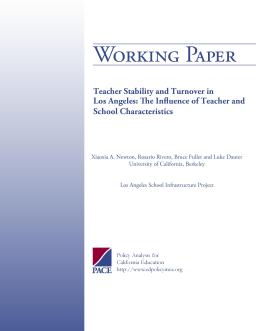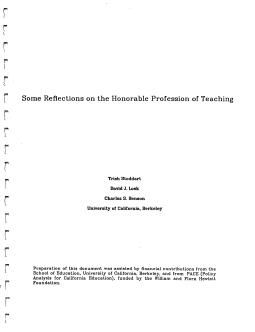The Influence of Teacher and School Characteristics
Published
Summary
This study explores how teacher characteristics and school context affect the timing of teacher exits from schools, using a two-level discrete-time survival analysis framework. Results for Los Angeles Unified School District show that school context is crucial, especially type of school and organizational characteristics, beyond individual teacher qualifications. Differences between elementary and secondary teachers are also observed.
Framing the Issues in Community Colleges
Published
Summary
This paper series addresses the issue of basic skills instruction in California Community Colleges. The problem is twofold: a high proportion of students enter college needing developmental courses, and these students are unlikely to move into college-level work. The research focuses on instructional issues, with observations and interviews to understand classroom and institutional settings. The subsequent papers in the series will cover various hypotheses for why success rates in basic skill instruction are not higher.
California’s Quality Education Investment Act
Published
Summary
This working paper examines the use of Quality Education Investment Act (QEIA) funds, which allocated $2.6B over seven years to California's lowest-performing schools. The authors conducted a study of four Los Angeles high schools to investigate how QEIA dollars were spent in the first year, who made the decisions, and how funds were used to improve teaching and the instructional program. The study found that district officials and principals had discretion in allocating funds, consistent with recent efforts to deregulate categorical-aid programs and give local educators fiscal discretion.
Published
Summary
California is at a critical juncture in education, needing up to 190,000 new teachers by 1991 and replacing 75% of the teaching force. Recommendations to improve teaching quality are proposed in this paper, focusing on changes in certification, professional training, and career structure. The state has the opportunity to ensure quality education for the 77 million students who will be taught by these new teachers.



